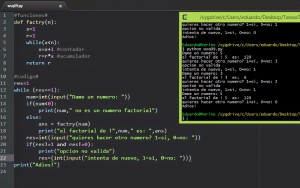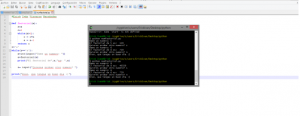For this WSQ I had to do a factorial calcultaron without importing predifined functions that python already have. For that, I had to define a function for the factorial calculation and a For loop to calculate the result.
Before enter the function in the actual program I did a while loop for the user to do as many calculations as he wants.
The complicated about this was to implement a way to avaoid the user to enter a float number, for this, i used the try and except statements which are explained better here: https:/
Here is the link to my program submitted to GitHub:https:/



